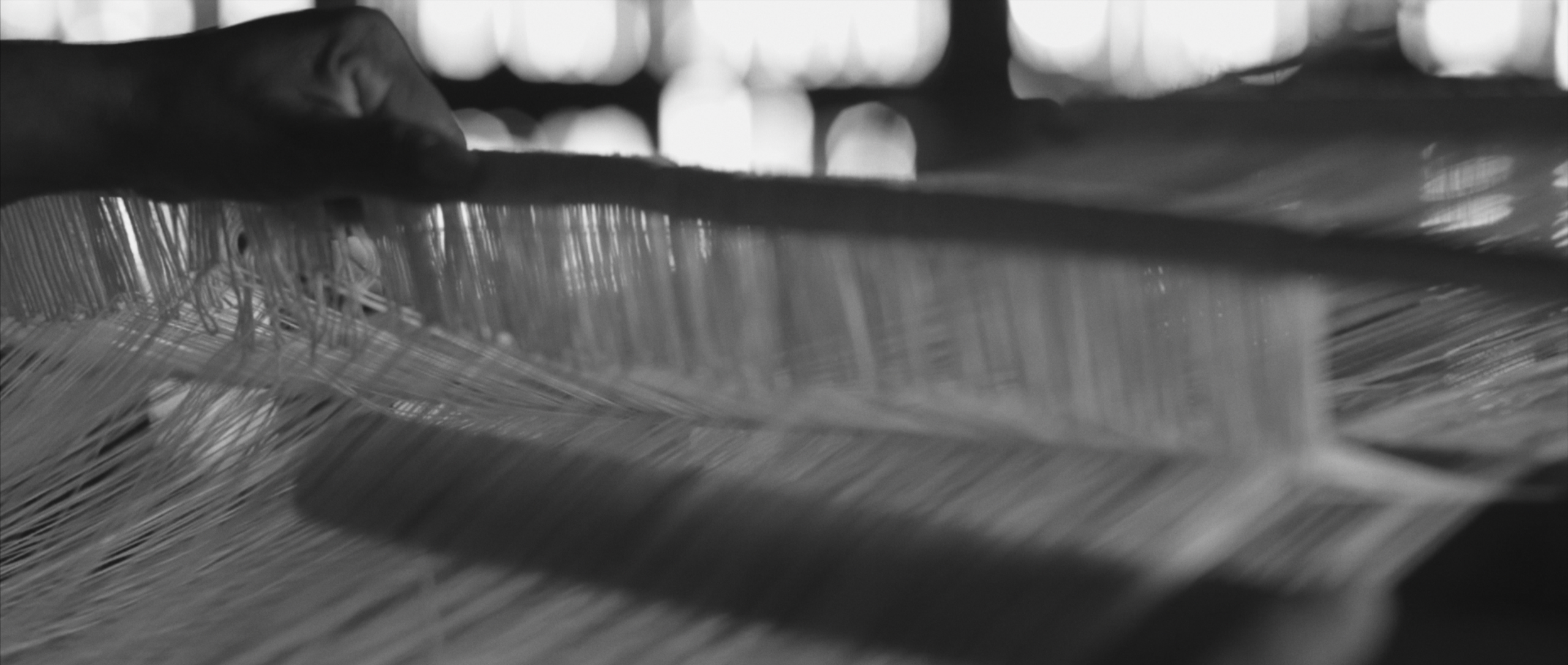Textiles have influenced humankind not only because of their characteristics as materials, but also because of the uniqueness and relevance of the techniques associated with them. In fact, spinning does not stem from the discovery or production of a material, but rather from the creation of techniques and the accumulation of knowledge and technological advances developed over thousands of years to produce fabrics. Textiles are the materials we obtain by weaving or interlacing threads, creating products that have been used to dress us, decorate homes, or make containers. Their etymology comes from the Latin textilis (fabric) and texere (to weave), but it derives from the Indo-European root teks, meaning “to weave, to make,” as in the Greek tekhne (technique).
“With the constant improvement of technology, we have used textiles throughout our history to make homes—such as tents—transportation items—such as stretchers—containers—such as sacks—and decorative items—such as carpets, curtains, and tapestries. Thanks to the creation of textiles, we have been able to reach the most remote corners of the planet, regardless of extreme climatic conditions, from the Death Valley Desert to Mount Everest.” University of Burgos, History of Textiles.
Without a doubt, its main application has been in the manufacture of our clothing. We began by removing the skins of other animals and sewing them together to provide shelter, but little by little, we began to create our “second skins” with plant and animal materials, such as linen, hemp, cotton, wool, and silk. We have had tools associated with weaving for over 40,000 years, such as needles made from bone. During the Neolithic period, the spindle was invented, and later, the spinning wheel, which, over time, would give rise to the first looms.

Within Mexico, countless cultural manifestations take place. Many of these expressions are not visible to the naked eye, but are embodied in the daily practices of the communities that preserve them. Artisanal techniques are considered part of the Intangible Cultural Heritage (UNESCO, 2003), but they are realized when the hands of artisans imprint their creative skill using a series of materials that will transform them into a piece of folk art. This heritage encompasses the concept of cultural value, which implies subjectivity and dynamism, as it does not depend on the goods themselves, but rather on the value socially attributed to them at a given point in time.
One of the fundamental inputs in this process is cotton, a soft fiber plant whose importance transcends borders. Although its primary use is in the textile industry, it is also employed in sectors such as medicine, upholstery, and even the production of paper money. The warm climate and favorable conditions of several Mexican regions allow this crop to flourish, positioning Mexico as one of the leading producers worldwide.
“Mexico is home to 14 of the 18 cotton species registered on the continent, and it ranks 9th worldwide with a production of 1,162,603 tons, or one of every 100 kilograms grown worldwide.” Secretary of Agriculture and Rural Development.
Cotton cultivation, in addition to being noble, is resilient: it can thrive with little water, make the most of rainfall, and adapt to diverse soils, characteristics that make it especially valuable in rural areas. Once harvested, the cotton is cleaned and prepared, traditionally by women who separate the fibers and transform them, through spinning, carding, and combing, into fine threads.
Textile work not only involves the mastery of complex techniques but also the intergenerational transmission of knowledge dating back thousands of years. Since the Neolithic, humanity has used tools such as bone spindles and needles, evolving toward more elaborate looms that allow the creation of clothing, ritual objects, and decorative objects. The word “textile,” of Latin origin, is deeply linked to the act of weaving, not only as a technique, but as a way of constructing meaning.
In regions like Veracruz, the legacy of indigenous peoples lives on through the textile craft practiced by Nahua, Otomi, Tepehua, and Totonac women. Since pre-Hispanic times, these women have perfected the art of spinning and weaving, creating unique pieces.
In the Totonac region of Papantla, the art of embroidery applied to pieces of their daily and ritual clothing stands out.
Indigenous Totonac women, skilled in textile art, have continued their craft since pre-Hispanic times. They were renowned as excellent spinners and weavers. Their magical hands mastered soft and semi-hard fibers, and with the help of their implements, they transformed them into threads of varying thicknesses. They later underwent various dyeing and weaving processes, resulting in a wide variety of woven blankets in multicolored designs.

In the Totonac region of Papantla, the art of applied embroidery on pieces of their everyday and ritual clothing stands out. Meanwhile, the Popoluca and Nahua groups of southern Veracruz continue to reproduce colorful woven sashes and braids on their looms using a variety of techniques and designs, competing in regional and national markets.
From a young age, girls are allowed to play with the pieces of the loom, but it’s not until they are six or seven years old that their mother teaches them to weave… “Until I grew up, my mother taught me to weave. When I was about 13 or 14, I learned to weave well and started selling my work.” Weaver Lucía
The backstrap loom is an instrument that, since pre-Hispanic times, has assisted Mesoamerican women in the creation of clothing, allowing them to develop their creativity and express it in a variety of fabrics. It is primarily made up of two groups of threads: the warp, which are the vertical threads that define the length and width of the fabric, and the weft, the threads that crisscross horizontally with the warp.
To assemble a loom, the ends of the warp must be tied to two pieces of wood or poles called “enjulios” (stave beams), which will support the weaving and define its width. The upper end of the loom must be secured to a fixed point, such as a tree or a post, while the lower end is held by a “mecapal” (a device used to carry bundles on the back and made of a woven ixtle sash with ropes at its ends and resting on the forehead), a type of sash that the weaver holds around her waist to tighten the loom.

The thread return is carried out using a “passing rod,” whose function is to raise the odd-numbered threads. Additionally, the threads are tightened with an attachment called a “machete” or “tzotzopaztli” (a stick used to tighten the weave during spinning). Weaving, therefore, involves the passage of alternating threads that are woven over the warp threads, returning in a constant back-and-forth motion. A wide variety of weaves can be made on backstrap looms, making the necessary adjustments to achieve the desired width and length. The method of weaving and the components are the same in almost all indigenous areas.
The artisanal dyeing of textiles with natural dyes is an ancient cultural activity. The resulting color is determined by the delicate interplay and manipulation of the multiple natural elements and chemical reactions involved in the process.
All textiles from the Papantla area are made with threads hand-dyed by women using natural dyes such as indigo, cochineal, guava leaves, and the bark of trees like oak, mahogany, or nanche, black sapote, guapinol, sacatinta, beach almond, and brazilwood. From this wide variety, the main colors used to color the textiles here emerge: blue and brown in various shades, but also pink, bright yellow, and pale green. Often, the fabrics are not dyed but embroidered to create garments and utensils.
The techniques used and the basic forms of the designs are preserved thanks to the weavers’ dreams and the memories of the elders, who maintain the representation of anthropomorphic, zoomorphic, and phytomorphic figures. These garments woven on the backstrap loom can be considered true works of art that embody the ideology and worldview of the group that wove them, whose cultural heritage unites them as a linguistic group and transmits their cultural experience, language, and identity to new generations.

Thanks to the fibers, dyes and the backstrap loom, indigenous textiles and clothing reached their maximum splendor and today we can still admire them in their pre-Hispanic forms, such as the “quexquémitl” (an indigenous garment used by women that is held around the neck over the huipil or blouse, it is embroidered according to the design of each ethnic group and serves to protect from the cold, covering the back and chest) so common in the Huasteca and other areas of the Gulf of Mexico coast, in the same way we can appreciate the “huipilli” (blouse or dress adorned with colorful motifs that are usually embroidered), the “cueitl” (a rectangular piece of cloth that is wrapped around the hips and tied at the waist with a fold or with a long, narrow sash or strip), the ilpicatl sash, the mamlli or apron, hair ribbons and other pieces of such an ancient tradition shown in the codices, sculptures and terracotta.
Textile work has not changed much since its inception. It has been prolonged and enriched by some elements introduced during the Colonial period (wool, pedal loom), and continues to exist, refusing to disappear, as traditional knowledge is passed down through generations, imbued with mysticism in terms of designs, shapes, and colors.

These textiles are much more than clothing or decoration: they are carriers of collective memory, material expressions of a symbolic universe that speaks to the history, language, and values of Indigenous communities. The anthropomorphic, zoomorphic, and phytomorphic figures that appear in the designs are proof of the profound connection between textiles and the worldview of those who make them.
Ultimately, Mexican textile art, based on cotton cultivation and ancestral techniques such as the backstrap loom, constitutes a form of cultural resistance. It is a living testament to how indigenous peoples have preserved, adapted, and passed on their heritage over time. Each woven garment is a story told with threads, a living memory that continues to dream in the hands of the weavers.
Centro de Artes Indígenas (CAI)
Unidos por el Tajín, A.C.
Carretera Poza Rica-San Andrés, Km 17.5 Papantla, Veracruz, Mexico
Tel.: +52 (782) 821 70 89 / 821 70 90
Web: https://www.facebook.com/CentrodelasArtesIndigenas


